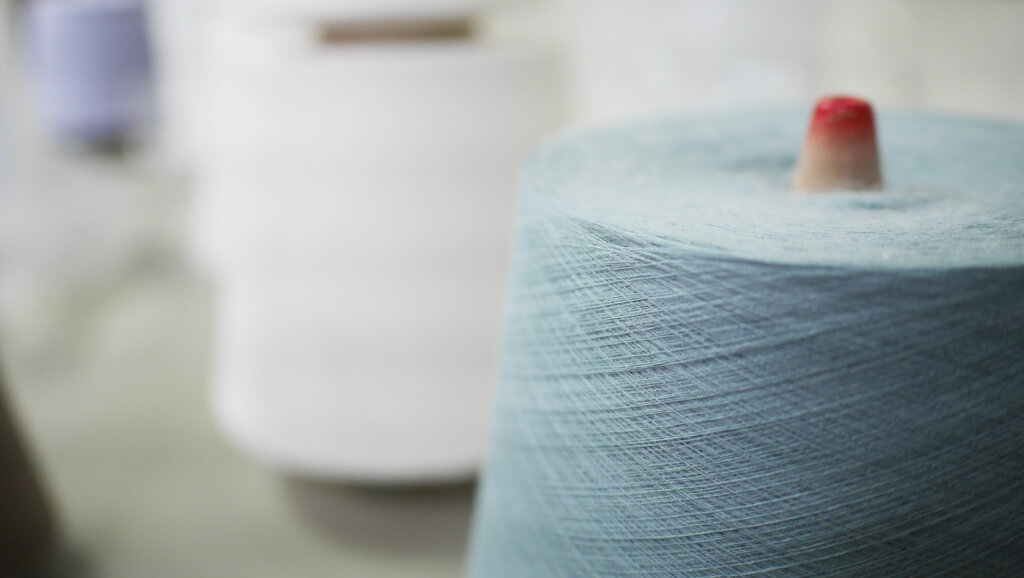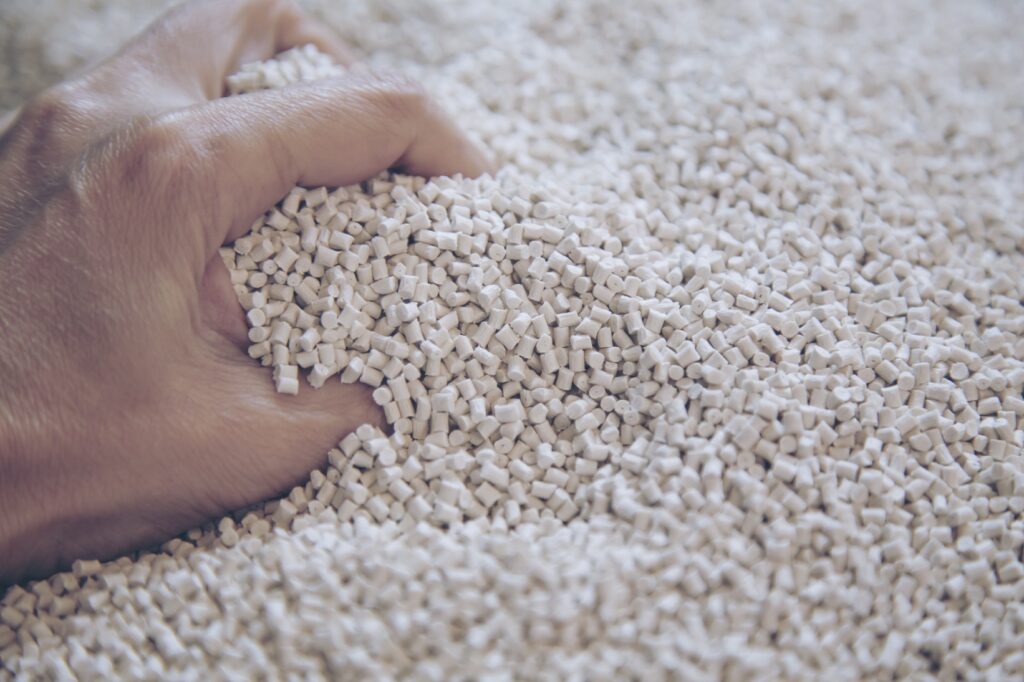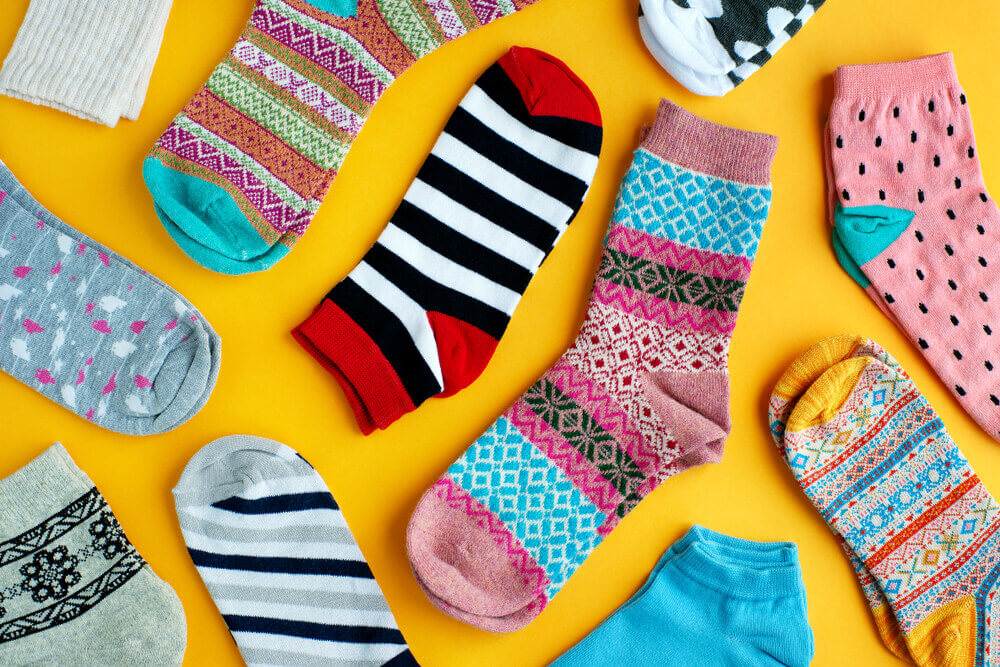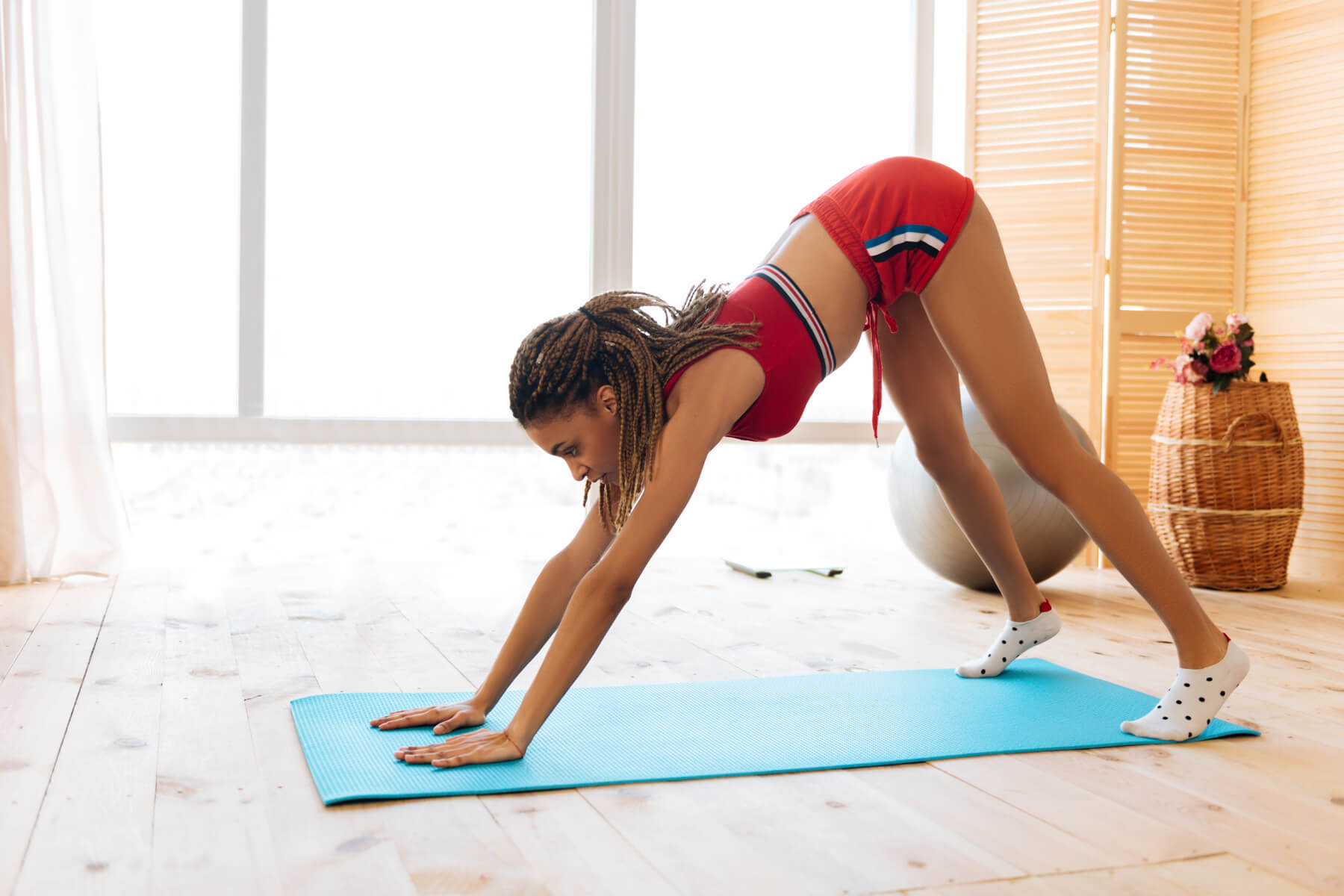Do you know that your sock material is integral to picking the best pair of socks? Each sock material caters to particular needs and occasions, and choosing the wrong type of socks material for a specific occasion can make you feel uncomfortable or even hurt your feet.
Few people ever pay special attention to the fabric of the socks when shopping, but it is time you start to make that change. Being considerate of the types of socks material will help you garner a newfound appreciation for good quality socks and how they make moving around more comfortable.

Cotton Socks: Most Commonly Used Material
Cotton is arguably the world’s favorite natural fiber and by far the most dominant fabric that comes out of the textile industry. Fibers intertwine and stitch together uniquely serving as the base for countless manufacturing demands. Footwear and clothing in general are primary sectors that utilize cotton fabric.
As a type of socks material, cotton is comfortable and versatile; recycled cotton is even naturally sustainable. Below let’s delve into some different types of cotton fabric:
Common Cotton
Cotton is a natural fiber, and users appreciate this material’s classic qualities, including superior comfort, warmth, and breathability. If you are the type of person who hates clothes that feel itchy, irritating, stiff, or clingy, consider making common cotton your top choice. Cotton is a naturally occurring fiber dated back to 600BC. Beyond general comfort, speaking of the advantages of cotton as a popular socks material, including its properties to absorb moisture, and provide superior comfort & breathability.
Combed Cotton
Another name for this type of cotton is combined cotton. This type of cotton undergoes thorough treatments to ensure that it is free from impure substances—it is made by using fine brushes to comb and pull out remaining impurities after carding, including short cotton fibers. After processing, only around 85% of the volume is kept and then spun into a thread.
Softer and more durable than common cotton, combed cotton is considered one of the highest quality (and thus usually more expensive) cotton fibers that you can find.
Mercerized Cotton
To obtain this cotton fiber, manufacturers need to undergo a mercerization process, which involves exposing cotton to sodium hydroxide. Doing this grants this type of sock material an almost silky feel along with a wash-resistant shine. Beyond leading to a fashionable look, the mercerization process also enhances the color fastness, stability, and durability of the yarn.
PIMA Cotton
It is said that PIMA cotton has a 50% longer life expectancy compared to other cotton products. This type of cotton comes with a longer fiber than conventional cotton, which makes this material smoother and softer to the touch, wrinkle-resistant, and much more durable. PIMA cotton is often recommended to athletic socks manufacturers, such as hiking and running socks, as this type of socks material can provide superior ventilation and moisture management even during hot weather.
Other Socks Materials for Various Occasions
Other commonly used materials for socks include wool and bamboo. Your specific needs and preferences should dictate the type of socks material you go for. As we are about to uncover, each fabric has its distinct properties which make them suitable for different weather conditions, environments, applications, and more.

Polyester
Polyester is a synthetic fabric melted and extruded from PET plastic pellets, which are then cooled to harden into a fiber. This type of socks material is resistant to stains, soft and warm, yet still lightweight with significant moisture-wicking properties. And due to its durable qualities, polyester material is a popular option for a variety of socks manufacturing, including casual wearing and athletic socks.
Nylon
Nylon socks are super stretchable, this elasticity makes them a go-to choice when participating in outdoor activities, such as hiking and running; they are also very durable and lightweight. Nylon is resilient, dries quickly, and does not absorb water. No wonder this synthetic material is so widely used in soft goods industries.
Acrylic
Acrylic fabric is a synthetic material woven or knitted with acrylic yarns, which is produced artificially through a synthetic polymer known as acrylonitrile. As this material is durable, rugged, warm, and effective in retaining heat, most commonly you will find acrylic fabric used in footwear or other clothing. This type of socks material is also inherently moisture-wicking and snug—some properties you will appreciate for long-time wear.
Wool
Help your customer keep their toes warm and cozy with pairs of wool socks, whether they prefer lounging around the house or hitting up snowy trails. The wool comes from sheep, and thus, the quality of wool can differ according to the breed of the sheep and even when you shear the sheep. Wool Socks are ideal for colder temperatures because they offer excellent warmth and insulation; it is considered one of the most effective forms of all-weather protection. Wool is also a highly breathable material preventing the wearer from excessive perspiration.
Bamboo
Fibers derived from bamboo stems are refined, elastic, breathable, and ultra-soft on your feet. This type of socks material helps maintain the environmental balance by being integrated into nature´s cycle. Bamboo fabric also comes with surprisingly good quality insulation, thermal regulation, and UV protection. All these features make bamboo a popular choice for hot weather.
Tencel
Tencel is a semi-synthetic, cellulosic fiber that is pleasant to the skin. Soft, absorbent, and resistant to wrinkles, Tencel is widely applied in general apparel, activewear, footwear, and more. This type of socks material also supports sustainability as it is made of renewable raw wood—breaking down the pulp of hardwood trees.
Trending Sustainable Materials
The increasing threat of climate change has propelled sustainability to become the “new normal” almost everywhere we look. From fashion to lifestyle products, we are seeing sustainable consumer products replacing their traditional counterparts. It’s safe to say that consumers’ demand for sustainable products will continue to make their production mandatory in the next few years. Below are some types of socks materials trending due to their sustainable qualities:

Coffee Yarn
Coffee Yarn is a sustainable fabric that comes from recycled ground coffee beans. This type of socks material depicts an innovative way to manufacture clothing. The result is a warm, moisture-wicking, durable pair fit for all adventures or everyday wear. And most importantly, it is a sustainable fabric that contributes to ecological balance.
PET Bottle Yarn
Plastic waste is extruded from recycled PET plastic pellets and can serve as a solution to
addressing the challenge of plastic waste management. Processing involves melting and turning recycled post-consumer-waste plastic bottles into polyester fabric. Eventually, you get pairs of breathable, elastic, and lightweight socks.
Recycled Nylon
Recycled Nylon is another widely-adopted sustainable socks material that provides multiple features, including moisture-wicking, odor control, and water resistance.
Read more about the sustainable yarns we provide here!
Polypropylene
Polypropylene (PP) is not only one of the most commonly used plastics in the industry but also one of the most sustainable types of plastics. PP consumes the least amount of energy during production and produces the lowest CO2 emissions compared to other plastics. Also, its lower density means that switching to PP reduces the absolute amount of physical waste; recycled parts made from PP can be reutilized for various applications, including clothing fibers, industrial fibers, food containers, dishware, etc.
As for the features and advantages, PP is a type of socks material that is light, stain-resistant, breathable, and has great moisture-wicking quality; it is sometimes used as inner sock liners and is perfect for warm and dry weather conditions.
Lyocell
Lyocell is the same material as Tencel. Tencel is the global Lyocell producer, making fiber by chemically processing the pulp of hardwood trees. Absorbent, soft, and easy to wear, this type of socks material is an eco-friendly fabric that provides exceptional comfort.
Organic Cotton
Organic cotton is one of the most environmentally friendly options; in fact, it would be challenging to find a substitute for organic cotton material since it comes naturally from the ground. Natural cotton is sustainable, highly versatile, and can take shape in many forms.
To learn more about types of socks material that make a positive impact on sustainability, visit our Sustainability page here!
There are numerous evaluation criteria when it comes to picking the types of socks material you need. If you are a bit at a loss, consult Paultex to find the best everyday and sustainable materials for your sock manufacturing needs!



